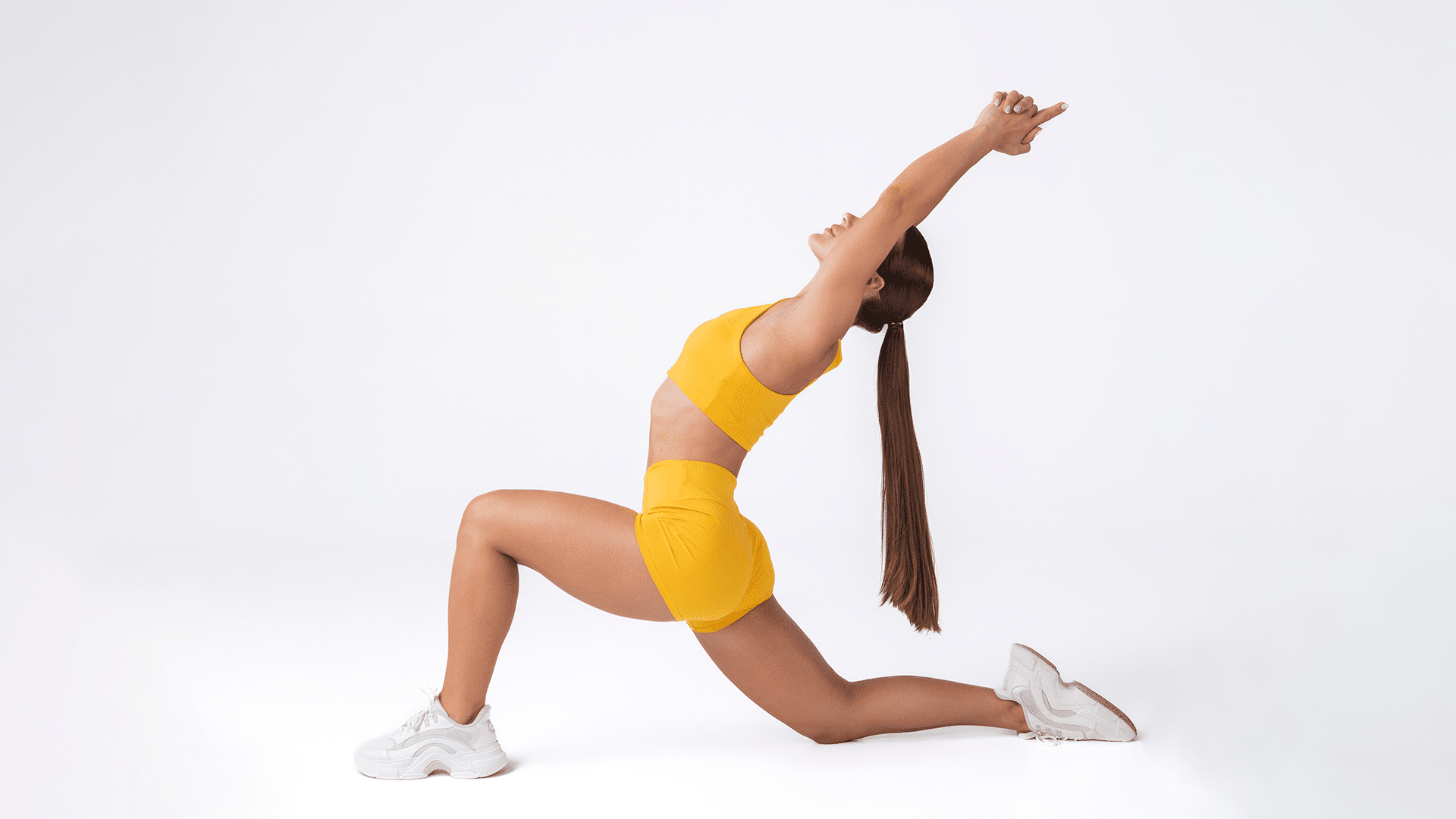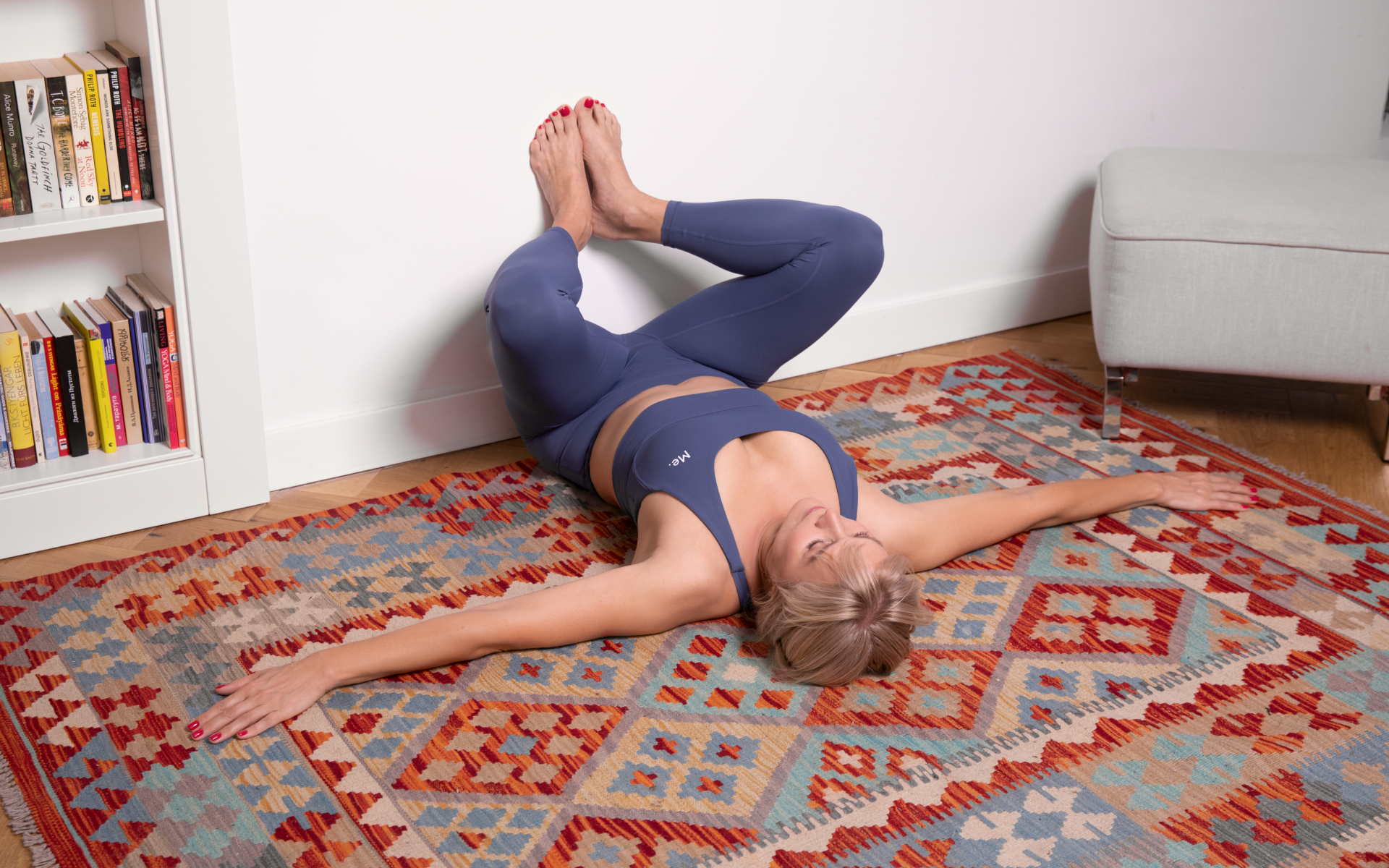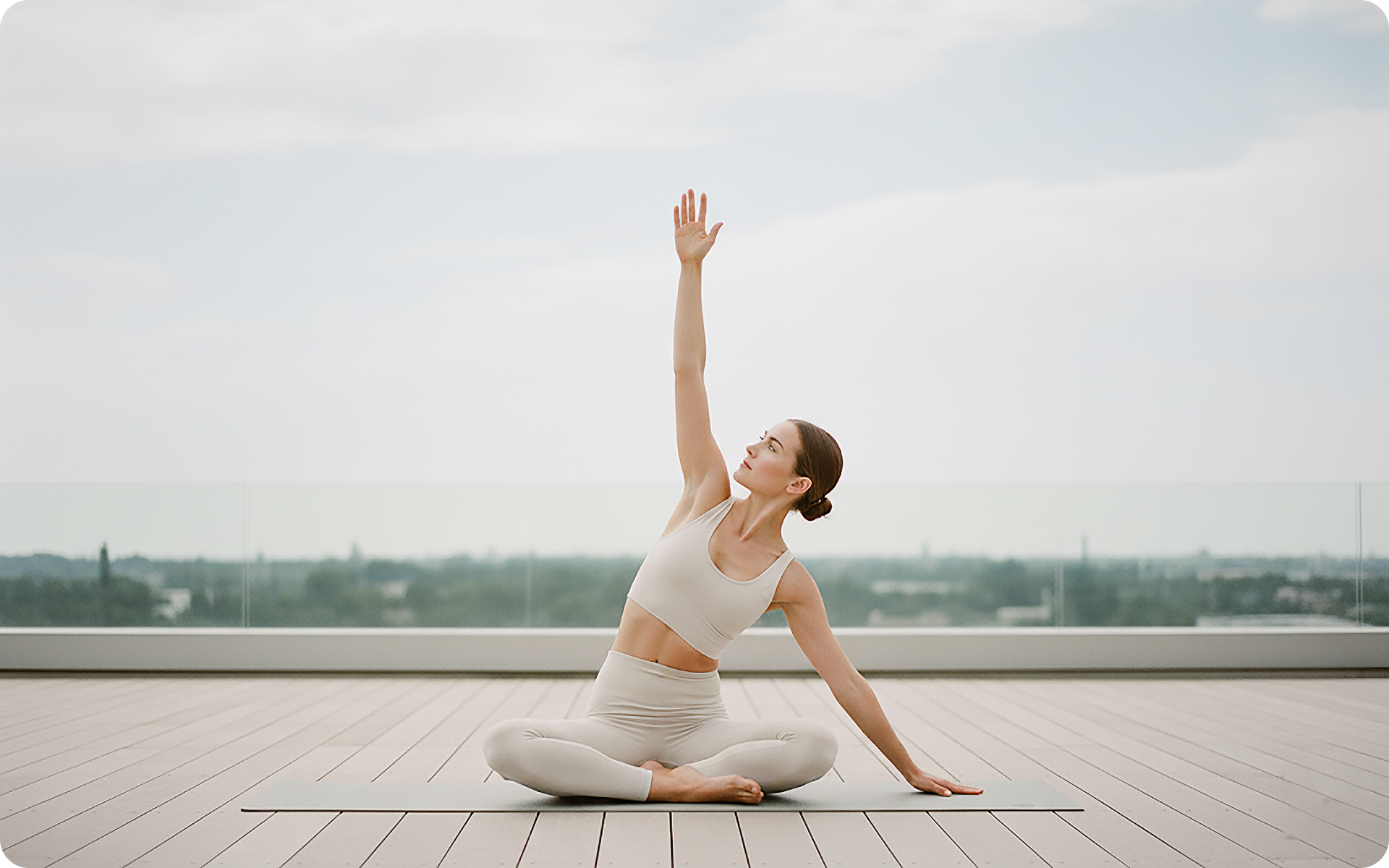Welcome to the ultimate test of grit, determination, and leg strength: the 30-Day Wall Sit Challenge! Did you know that a whopping 80% of adults experience lower back pain at some point in their lives? (10) Strengthening the muscles targeted by wall sits can significantly reduce this discomfort and improve your overall quality of life. Not sure what wall sits are, which muscles they target or how to do them properly? We’ve got you covered. In this article, we’ll reveal the amazing benefits of this simple yet powerful exercise, so brace yourself (and your legs) for an adventure that will leave you feeling stronger and more resilient.
What Is The 30 Day Wall Sit Challenge?
The 30-Day Wall Sit Challenge is a fitness routine designed to strengthen your lower body muscles, improve your posture, and increase your endurance by performing wall sits daily for a month.
This challenge is suitable for individuals of all fitness levels, as you can easily modify the duration and intensity to meet your personal goals. Here’s a detailed breakdown of the elements involved in this challenge:
1. Duration
The challenge lasts for 30 consecutive days, during which you’ll perform wall sits every day.
2. Progression
Start with a manageable duration for your wall sit (e.g., 10-15 seconds) on day one, and gradually increase the time spent in this position as the days go by. By the end of the challenge you should aim to hold the wall sit for at least 60 seconds or more.
3. Technique
To perform a wall sit correctly:
- Stand with your back against a flat wall and your feet shoulder-width apart.
- Slowly slide your back down the wall until your thighs are parallel to the floor, forming a 90-degree angle at your knees. If you have limited mobility, or restrictions or are an absolute beginner that cannot lower to that depth, start at a depth you can control and gradually increase it over time, as your strength, mobility (or other factors) improve.
- Keep your back flat against the wall and your hands either on your hips or by your sides.
- Hold this position for the designated duration.
4. Rest Days (Optional)
Depending on your fitness level, you may choose to include rest days in your 30-day challenge. For example, you could perform wall sits for six consecutive days and then take a rest day on the seventh day before resuming the challenge. If you are a beginner or completely new to exercise, consider alternating days between the challenge and a rest day, to allow your body to adapt to the new load.
5. Tracking Progress
Keep a log of your daily wall sit duration to track your progress throughout the challenge. You can use a notebook, smartphone app, or even a simple calendar to record your times.
6. Variations And Modifications
To increase the intensity of the challenge, you can add variations such as single-leg wall sits, wall sits with weights, or wall sit marches. Alternatively, you can modify the exercise by reducing the depth of the squat or shortening the duration if you’re a beginner.
Read More: A Simple Guide To Doing Wall Squats With Ball
What Muscles Does Wall Sit Challenge Work?
The Wall Sit Challenge primarily targets the lower body muscles, engaging multiple muscle groups during the exercise:
1. Quadriceps
The quadriceps, or quads, are the large muscles at the front of your thighs. They consist of four separate muscles: rectus femoris, vastus lateralis, vastus medialis, and vastus intermedius. These muscles play a crucial role in extending and supporting your knee joint and supporting your body weight during a wall sit.
2. Hamstrings
Located at the back of your thighs, the hamstrings comprise three muscles: biceps femoris, semitendinosus, and semimembranosus. They work together to bend your knee and stabilize your body while performing a wall sit.
3. Glutes
The gluteal muscles, or glutes, include the gluteus maximus, gluteus medius, and gluteus minimus. These muscles are responsible for hip extension, abduction, and rotation. In a wall sit, the glutes help maintain proper posture stabilize the hips, and support your body weight.
4. Calves
The calf muscles, consisting of the gastrocnemius and soleus, are located at the back of your lower legs. They aid plantar flexion (pointing your toes) and provide stability while holding the wall sit position.
5. Adductors
The adductor muscles (adductor magnus, adductor longus, adductor brevis, gracilis, and pectineus) are found on the inner thighs. They help stabilize your legs and maintain proper alignment during a wall sit.
6. Core Muscles
Although not the primary focus of the wall sit, your core muscles—including the rectus abdominis, obliques, and erector spinae—engage to stabilize your torso and maintain proper posture throughout the exercise.
Looking for a way to break the vicious cycle of weight loss and tone up all the jiggly parts? Watch the extra pounds fly off and your muscles firm up with the BetterMe app!
What Will 30 Days Of Wall Sits Do?
1. Improved Lower Body Strength
Wall sits are an isometric exercise that engages multiple lower body muscles, including your quadriceps, hamstrings, glutes, and calves.
Consistently performing wall sits for 30 days can lead to increased strength in these muscles, which is essential for various daily activities like walking, climbing stairs, sitting down, standing up, and lifting heavy objects.
This improved lower body strength not only makes everyday tasks easier but can also reduce the risk of injuries and contribute to overall wellness (5).
2. Enhanced Core Stability
Although not the primary target, wall sits do engage your core muscles, which help maintain proper posture during the exercise.
A stronger core promotes improved stability and balance, making it easier to perform other exercises and physical activities (6).
In addition, a strong core can help to prevent lower back pain and improve overall posture, leading to enhanced well-being and reduced risk of injury (6).
3. Increased Muscular Endurance
Performing wall sits over an extended period can help build muscular endurance, which can enable your muscles to work for longer periods before fatiguing.
Muscular endurance can have favorable effects on various areas such as general daily activities, physical activity, and sports performance. In addition, improved muscular endurance contributes to improved overall fitness and quality of life (4).
4. Better Posture
Wall sits require you to maintain a straight back against the wall, engaging your core and back muscles to support your spine.
Over time this can lead to better posture as your muscles grow stronger and more accustomed to maintaining proper alignment as well as developing strength through your core which further supports good posture.
Good posture is crucial for overall well-being, as it can reduce the risk of back pain, improve confidence, and promote efficient movement, and breathing patterns (1).
5. Reduced Risk Of Injury
The 30-day wall sit challenge promotes balanced muscle development in your lower body, which can help prevent injuries caused by muscle imbalances or weaknesses.
By targeting multiple muscle groups, the challenge ensures that no single muscle is overworked or underdeveloped.
This balanced strength and flexibility can help protect your joints, ligaments, and tendons, which can play a role in injury prevention during physical activities and daily tasks (7).
Read More: Do Wall Sits Build Muscle?
6. Increased Calorie Burn
While wall sits are primarily a strength training exercise, they do burn calories, especially as you increase the duration and intensity of your holds.
Over 30 days, the accumulated calorie burn can contribute to weight management or loss when combined with a healthy diet and other forms of exercise.
Maintaining a healthy weight is essential for overall health and can reduce the risk of chronic diseases like heart disease and diabetes (3).
7. Improved Balance And Coordination
The 30-day wall sit challenge helps enhance balance and coordination by engaging multiple muscle groups simultaneously and requiring you to maintain proper form throughout the exercise.
Improved balance and coordination are essential for both sports performance and daily activities, which can help reduce the risk of falls and injuries (2). Additionally, better balance and coordination contribute to more efficient movement patterns.
8. Mental Resilience And Discipline
Completing the 30-day wall sit challenge requires dedication, discipline, and mental resilience, as you push through the discomfort of holding the position for increasing durations.
Developing this mental fortitude can translate into other areas of your life, helping you tackle challenges and persevere in difficult situations.
This increased mental resilience and discipline can lead to personal growth and improved overall wellness.
How To Do The Wall Sit Challenge
Embarking on the 30-day wall sit challenge is an exciting and rewarding journey, but it’s essential to know how to perform the exercise correctly and address any concerns that may arise along the way.
Here’s everything you need to know about executing the wall sit challenge, from proper form and beginner modifications to advanced progressions and increasing endurance.
How to Perform a Wall Sit:
- Find a flat, stable wall with enough space for you to stand against it.
- Stand with your back against the wall and your feet shoulder-width apart.
- Slowly slide your back down the wall until your thighs are parallel to the floor, forming a 90-degree angle at your knees or higher if you cannot reach that depth.
- Keep your back flat against the wall and your hands either on your hips or by your sides.
- Hold this position for the designated duration, maintaining proper form throughout.
If you tend to let yourself off the hook, raise the white flag when things get tougher than you expected, send yourself on an unconscious binge-eating trip – BetterMe app is here to help you leave all of these sabotaging habits in the past!
How Many Wall Sits Should I Do?
During the 30-day wall sit challenge, you should perform one wall sit per day. Start with a manageable duration on day one and gradually increase the time spent in the position over the course of the challenge.
How Long To Hold A Wall Sit?
On day one, start with a duration that feels challenging yet achievable, such as 10-15 seconds. As you progress through the challenge, aim to increase your hold time each day. By the end of the 30 days, your goal should be to hold the wall sit for at least 60 seconds or more.
What To Do When Experiencing Discomfort Or Pain?
If you experience discomfort during a wall sit, check your form to ensure your back is flat against the wall, your knees are aligned above your ankles, and your thighs are parallel to the floor. If the discomfort persists, you can try adjusting your position, to maintain a higher depth, and in turn, find a more comfortable position. If adjusting the position doesn’t help, stop the exercise and consult a healthcare professional or fitness expert for guidance.
How To Increase Endurance?
To increase endurance during the 30-day wall sit challenge, gradually extend the duration of your wall sits each day. You can also incorporate other lower body and core exercises into your routine to build strength and endurance. Additionally, focus on proper form and breathing techniques to maximize the efficiency of your wall sits.
How To Modify The Wall Sit For Beginners?
If you’re a beginner, you can modify the wall sit by reducing the depth of the squat or shortening the duration. Start with a higher squat position, where your knees are bent at a smaller angle, and gradually work your way down to a full 90-degree angle as you gain strength and confidence. Similarly, begin with shorter hold times and increase them as your endurance improves.
How To Progress The Wall Sit For Advanced Participants?
For those seeking a more challenging wall sit experience, consider adding variations such as single-leg wall sits, wall sits with weights, or wall sit marches. These modifications will increase the intensity of the exercise and further challenge your lower body muscles and core stability.
-
Proper Breathing Technique
Breathing plays a crucial role in executing any exercise (8), including wall sits. During the wall sit challenge, focus on maintaining steady, controlled breaths. Inhale deeply through your nose, filling your lungs completely, and then exhale slowly through your mouth.
This proper breathing technique helps deliver adequate oxygen to your muscles, reduces the risk of dizziness or lightheadedness, and keeps you focused on maintaining proper form.
-
Warming Up And Cooling Down
To prevent injuries and support recovery, it’s essential to warm up before starting your wall sit challenge and cool down afterward (9).
A warm-up should consist of 5-10 minutes of light aerobic exercise, such as jogging or jumping jacks, followed by dynamic stretching targeting your lower body muscles. After completing your wall sit, cool down with 5-10 minutes of gentle aerobic activity, like walking, and finish with static stretches for the muscles worked during the exercise.
-
Monitoring And Tracking Progress
Keeping track of your progress throughout the 30-day wall sit challenge can be highly motivating and help you stay accountable. You can use various methods, such as smartphone apps, calendars, or journals, to record your daily wall sit durations. By monitoring your progress, you’ll be able to see improvements over time and celebrate milestones along the way.
-
Staying Motivated And Consistent
Staying motivated and consistent is key to successfully completing the 30-day wall sit challenge. To maintain motivation, set realistic goals, and remind yourself of the benefits you’ll gain from the challenge.
Share your progress with friends or family members, or join online communities for support and encouragement. Additionally, consider pairing the wall sit challenge with other exercises or activities you enjoy to keep your fitness routine fresh and engaging.
Common Mistakes And How To Avoid Them
To have proper form, safety, and effectiveness, be aware of common mistakes made during wall sits and how to avoid them:
- Incorrect knee position: Be sure your knees are directly above your ankles, not extending past your toes.
- Sliding too low or not low enough:Aim for a 90-degree angle at your knees, with your thighs parallel to the floor (if your current ability allows, otherwise modify to a suitable depth).
- Arching or rounding the back: Keep your back flat against the wall throughout the exercise.
- Holding your breath: Remember to breathe steadily and deeply during the wall sit.
By avoiding these mistakes, you’ll maximize the benefits of the wall sit challenge while reducing the risk of injury.
Incorporating Wall Sits Into Your Overall Fitness Routine
Integrating the wall sit challenge into your existing fitness routine can help you achieve a well-rounded workout regimen.
After completing the 30-day challenge, consider incorporating wall sits into your regular strength training sessions or using them as active rest between other exercises.
By incorporating wall sits into your regular strength and conditioning routine, you can sustain the benefits you’ve gained from the challenge and continue to make progress towards your overall fitness goals.
The Bottom Line
The 30-day wall sit challenge offers a simple yet effective way to improve lower body strength, muscular endurance, core stability, and overall fitness.
By consistently performing wall sits with proper form and gradually increasing duration, you’ll experience numerous benefits such as better posture, reduced risk of injury, and improved balance and coordination.
The key to success lies in staying motivated, tracking your progress, and integrating the challenge into your overall fitness routine.
DISCLAIMER:
This article is intended for general informational purposes only and does not serve to address individual circumstances. It is not a substitute for professional advice or help and should not be relied on for making any kind of decision-making. Any action taken as a direct or indirect result of the information in this article is entirely at your own risk and is your sole responsibility.
BetterMe, its content staff, and its medical advisors accept no responsibility for inaccuracies, errors, misstatements, inconsistencies, or omissions and specifically disclaim any liability, loss or risk, personal, professional or otherwise, which may be incurred as a consequence, directly or indirectly, of the use and/or application of any content.
You should always seek the advice of your physician or other qualified health provider with any questions you may have regarding a medical condition or your specific situation. Never disregard professional medical advice or delay seeking it because of BetterMe content. If you suspect or think you may have a medical emergency, call your doctor.
SOURCES:
- 7 Benefits of Improved Posture at Work + Exercises to Help (2020, usa.edu)
- Health Benefits of Physical Activity for Adults (2021, cdc.gov)
- Keeping a Healthy Body Weight (2017, heart.org)
- Musculoskeletal fitness, health outcomes and quality of life (2001, nih.gov)
- The Relationship Between Lower-Body Strength and Power, and Load Carriage Tasks: A Critical Review (2019, nih.gov)
- The real-world benefits of strengthening your core (2012, harvard.edu)
- The effectiveness of exercise interventions to prevent sports injuries: a systematic review and meta-analysis of randomised controlled trials (2014, nih.gov)
- Your lungs and exercise (2016, nih.gov)
- Why Warming Up and Cooling Down is Important (2016, tricitymed.org)
- Low back pain in adults (n.d., medparkhospital)
















